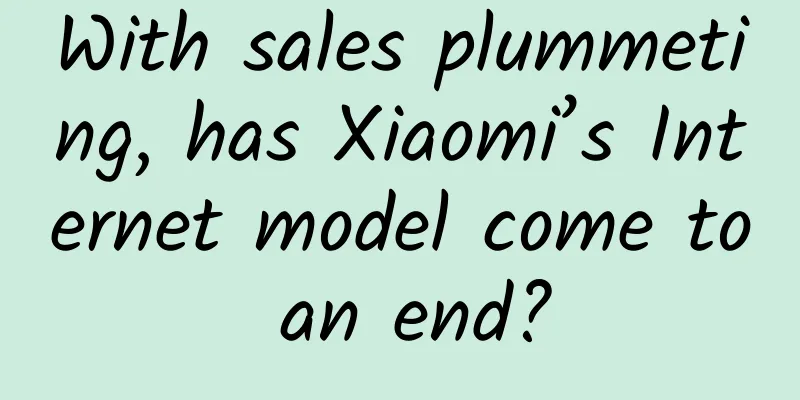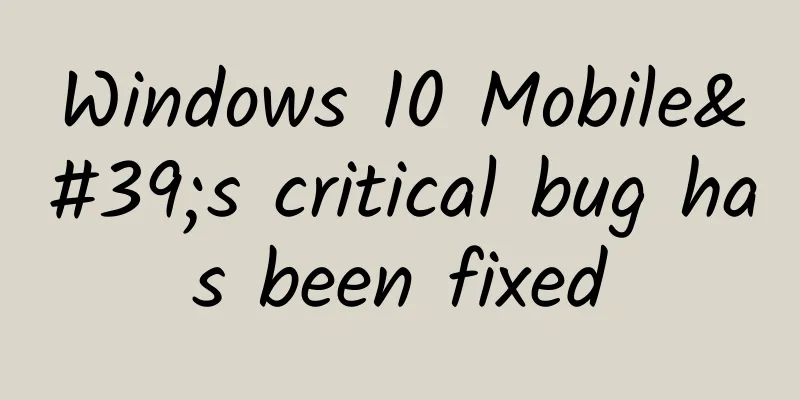With sales plummeting, has Xiaomi’s Internet model come to an end?

|
In the smartphone industry or the Internet technology circle, there has always been a lack of voices criticizing Xiaomi, and this seems to have slowly become a political correctness. However, anything that can be "badmouthed" must have been the center of attention before. From the creation of MIUI in 2010 to the release of the Redmi Note 4X in 2017, Lei Jun personally created the current Xiaomi empire in less than seven years . However, in 2017, after IDC announced that Xiaomi's sales had plummeted 36% in 2016, this wave of "pessimism" from the media seemed serious. 1. Xiaomi’s sales crisis According to the IDC China Mobile Tracking Report, Xiaomi's shipments in 2016 were 41.5 million units, a year-on-year decrease of 36% from 64.9 million units in 2015. At the same time, its market share dropped from 15.1% to 8.9%, ranking fifth after OPPO, Huawei, vivo, and Apple. Sales volume also fell in each quarter, and 2016 was undoubtedly the low point for Xiaomi. IDC ReportIDC stated in the report that 2016 was a year in which China's smartphone consumption demand upgraded, but Xiaomi failed to seize the market opportunity. Xiaomi may not comment on IDC's data, but the sales problem may be a lesson that Xiaomi must reflect on in 2017. However, given Lei Jun's personality, he will not reflect too much, but will take direct action to solve the problem and then look back to summarize. 2. The Internet model is no longer working? When Lei Jun first started Xiaomi, he had the idea of an e-commerce model like Xiaomi.com, although it later became a "sold-out" platform, causing Mi fans to experience fake buying sprees again and again. Xiaomi Internet ModelThis model is the so-called Internet thinking, but in terms of sales channels, this method is essentially the same as TV shopping: both are to save the cost of the middle link and deliver the product directly to the buyer. The only difference is that TV shopping is mostly based on verbal deception, while Xiaomi's online store sells genuine and cost-effective mobile phones. The advantage of Xiaomi's online model is that it reduces intermediary costs and prevents distributors from making a profit from the price difference. On the other hand, it can also control production capacity to a certain extent, producing a batch, grabbing a batch, selling a batch, and then producing a batch again. Of course, the manufacturer calls this "capacity climbing." However, this also caused a chain reaction of regular shortages, as well as scalpers raising prices and making it difficult to get a phone. On the other hand, Ov's strategy of focusing on offline business and making money together means that it can safely and boldly push goods to dealers to sell, and will not be branded as a "hunger marketing" brand. After a period of rapid growth, Xiaomi’s Internet model seems to be no longer effective in the face of traditional strategies. 3. Do you want to learn from Youshang? Since the online Internet model is no longer working, should we learn from a competitor and develop offline channels? Huawei, Meizu, and Gionee have already done so, but Lei Jun may not think so. Ov offline storeEven if it is to do offline business, Lei Jun still hopes to do it with Internet thinking, and everything is still centered on cutting out unnecessary links to improve efficiency. In other words, Xiaomi may not use traditional channels to build good relationships with dealers and hold thank-you banquets such as order meetings. Xiaomi will not and cannot learn from its competitors, but instead has launched the two major banners of Xiaomi Home and Xiaomi Direct Supply. Xiaomi HomeThe concept of Xiaomi Home has been talked about for a long time. Lei Jun even boasted at the annual meeting that he would open 1,000 stores, which echoes Huawei's Thousand County Plan. Although it is a bit too late, Xiaomi still plans to build its own offline channels. From Lei Jun's perspective, Xiaomi Home is still a student of Apple. He hopes that users can come and visit every once in a while and discover new products every time. However, the effect of Xiaomi Home may not be obvious in the short term, and the investment in offline stores is not a small amount. Xiaomi direct supplyXiaomi's direct supply is a new trick that was recently launched. When you first hear these four words, you may mistakenly think it is a pyramid scheme. However, Xiaomi may not intend to make all Mi fans become salesmen. Perhaps direct supply will become a system to recruit vendors. On the one hand, it can avoid uncontrollable phenomena such as mixed goods and price increases. On the other hand, this offline method is also very "Internet thinking". 4. Are you still going to do 1999? In fact, Xiaomi's problems are far more than just shipments. Lei Jun also needs to consider profit margins. At the beginning of this year, Xiaomi mobile phones and Xiaomi TVs were forced to increase prices due to cost pressure. According to various analysts, the price increase of electronic products this year is an inevitable trend, and the current shipment volume of smartphones is more affected. The thousand-yuan phones with the smallest profit margins have already increased in price, so who will be the next to go? 1999It is very likely that it will be the "1999" tier that Xiaomi is famous for. However, according to Lei Jun's temperament, 1999 will continue to be made, but Xiaomi must also make a difference in the high-end market. In terms of technology, the appearance of Xiaomi MIX really amazed everyone. This also shows that Xiaomi is still full of internal motivation for innovation and will not blindly make high-end products that go against its original intention for the sake of high profits. However, whether in terms of production capacity or product maturity, Xiaomi MIX is not enough to help Xiaomi support the high-end market. Therefore, for sales considerations, Xiaomi needs a high-end product that can balance "fever" and "profit". If it still relies on Redmi or 1999 to conquer the world, the situation in 2017 may be even worse. 5. Sales volume is not everything Whether it is sales or profits, these can be used as standards for evaluating entrepreneurs, but they cannot represent everything about Xiaomi. In addition to commercial pursuits, technology companies often have unique ideals. As for the three BAT companies, Li Yanhong certainly didn't want to sell medical advertisements at the beginning, Jack Ma hoped that there would be no difficult business in the world, and Ma Huateng tried to connect everything through social networking. The same is true for Xiaomi. Even if it encounters a trough, people will still remember that someone once defined the price of a smartphone at 1,999 yuan. There is nothing wrong with Internet thinkingBut survival comes first, and only then can we talk about feelings. After all, Xiaomi's size is not a company that can be supported by craftsmanship like Hammer. Even its old rival Huawei has laid off employees this year due to weak revenue from its consumer BG business. According to the situation of smartphone market in 2016, the inertia of Ov's victory in offline channels is likely to continue this year. The market is so small that Xiaomi will either advance or retreat. Summarize In fact, Xiaomi has made many changes, including inviting spokespersons, developing offline channels, and exploring the high-end market. In terms of methodology, Xiaomi's Internet model may have come to an end, but its idea of improving efficiency and reducing unnecessary costs is in the interests of most users. Lei Jun's thoughtsHowever, Lei Jun can treat Mi fans as friends, but consumers are still God after all. There is no unchanging marketing strategy, only the ever-changing market demand. When cost-effectiveness is no longer the mainstream, Xiaomi should also make some changes to meet the user demands under consumption upgrades. 2016 was a low point for Xiaomi, and this low point may not have reached its bottom yet. But who can say for sure in the long run? When Xiaomi's sales were booming in the early years, no one predicted the current staged success of offline channels. As a winner of Toutiao's Qingyun Plan and Baijiahao's Bai+ Plan, the 2019 Baidu Digital Author of the Year, the Baijiahao's Most Popular Author in the Technology Field, the 2019 Sogou Technology and Culture Author, and the 2021 Baijiahao Quarterly Influential Creator, he has won many awards, including the 2013 Sohu Best Industry Media Person, the 2015 China New Media Entrepreneurship Competition Beijing Third Place, the 2015 Guangmang Experience Award, the 2015 China New Media Entrepreneurship Competition Finals Third Place, and the 2018 Baidu Dynamic Annual Powerful Celebrity. |
>>: Volkswagen plans to lay off 14,000 employees to make up for emissions scandal losses
Recommend
Wandering "Love Rival Strategy Video Course" + "Love Rival Handbook"
Introduction to the resources of Langji's &qu...
In order to grow taller, they actually "broke" their legs?
Recently, topics such as "A young man spent ...
Musician Guitar Lesson Video Explanation Edition e-book (txt+pdf+mobi+equb+docx+azw3) Baidu Cloud Download
This book will proceed in a step-by-step manner, ...
Low cost and high activity, how to recall users?
What I will talk about today is mainly related to...
The symptoms are similar, be careful that a cold may develop into myocarditis!
Review expert: Peng Guoqiu, deputy chief physicia...
A talk on interstellar migration: Is it better to place humans in one cradle on Earth, or to put them in several baskets?
I often say that human beings are like a group of...
Behind the collective criticism from competitors: LeTV’s “buy a membership and get a TV for free” has changed the way the industry plays
April 14th, an originally ordinary day, has becom...
How to write a new media marketing promotion plan!
What role does new media marketing play? How to s...
The Great Voyage丨Were Tang Dynasty wooden sailing ships so advanced?
Rugao Tang Dynasty Wooden Sailing Ship In the &qu...
Can elderly care be more efficient? Bio-radar becomes a new type of "guardian"
Whether it is an accidental fall or forgetting to...
Taking stock of the least noticeable CPUs in recent years: Does Intel i7 also have insider information?
From the first CPU in history, Intel 4004, to the...
Why did Folding Beijing win the Hugo Award despite the scarcity of technological elements?
Yesterday, there were many topics about women. In...
How will ChatGPT affect children's growth and future employment? We urgently need answers
Children are also using generative AI, but they o...
Two cases of monkeypox were found in Beijing. One picture shows you the true face of monkeypox!
According to the Beijing Center for Disease Contr...
Meiyajia: Quickly and easily understand store operations [WeChat Enterprise Account Case]
Meiyijia Enterprise Account helps every store own...









